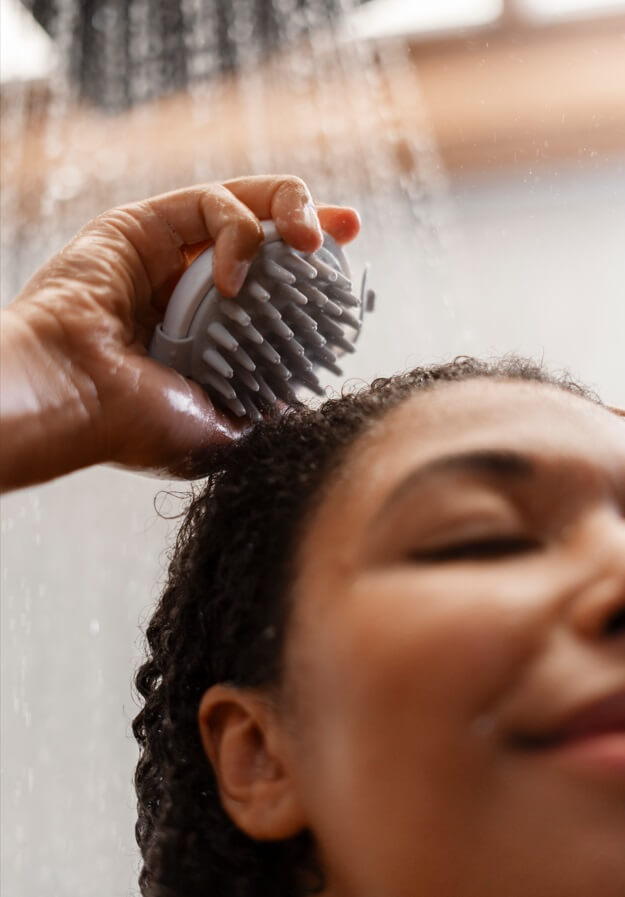How to Exfoliate Scalp: Tips and Techniques for Great Hair
Do you want beautiful and healthy hair? Then you need to have a healthy scalp. The best way to get that is to take good care of your scalp. You can do this by washing and moisturizing your scalp. You should also exfoliate it several times a week.
Exfoliation is the process of removing dead skin cells from the skin. Studies show humans shed around 200,000 skin cells an hour. But not all dead cells fall off. This can result in clogged pores and flaky patches on the skin. Exfoliating prevents this.
Most know how to exfoliate the face and body. What about the scalp? This post explains why you need to exfoliate your scalp and how to do it.
Why Should You Exfoliate Your Scalp?
Dermatologists say exfoliation leaves the skin cleaner and brighter. It also ensures better product absorption. There are other reasons to do this. Here are three of them.
- It helps remove buildup. Dead skin cells, oil, and product residue accumulate on the scalp. This can cause clogged pores and dull-looking hair. Exfoliating the scalp will help remove these impurities. This lets your scalp breathe. It also promotes hair growth.
- It improves circulation. You use a gentle massaging motion when exfoliating your scalp. This stimulates the blood flow to the scalp. The improved blood circulation nourishes the hair follicles. It also encourages healthy hair to grow.
- It prevents dandruff. This condition causes the skin on the scalp to flake. This happens when there’s a buildup of dead skin cells. Regular exfoliation can reduce the buildup of dead skin cells.
How to Exfoliate Scalp in 6 Easy Steps
Having a good hair care regimen is a must. You can take care of your scalp better if you incorporate it into your routine. Here’s what you should do.
- Start with a Clean Scalp
You must make sure your scalp is clean before exfoliating. There shouldn’t be any styling products or excess oil. It’s best if you use a gentle shampoo to cleanse your scalp and hair.
You should also shower with warm water. It opens up the pores and softens the skin. This makes exfoliating easier. Rinse your scalp with warm water for a few minutes before exfoliating.
- Section Off Long and Thick Hair
Exfoliating long or thick hair is more challenging. The length and thickness could result in the uneven application of products. It’s best if you section off your hair before applying a scalp exfoliant. This gives you better access to your scalp. It also ensures the even application of the product.
- Choose Your Exfoliation Technique
There are two ways to exfoliate your scalp. You can use a physical exfoliant or a chemical one. The former are scrubs with salt, sugar, or beads. They need friction to scrub away buildup and dry skin. You provide that friction by rubbing the product in using your fingers.
Chemical exfoliants have ingredients that dissolve dead skin cells. Shampoos for dandruff and itchy scalp are examples of these exfoliants. These products often contain salicylic acid, ketoconazole, or selenium sulfide.
- Start Exfoliating
You must exfoliate your scalp well. Massage the exfoliant using your fingertips. Make sure you put a light pressure and do circular motions. You can also use a brush with soft bristles. Be gentle to prevent damage or skin irritation. or damage.
Pay extra attention to areas where there’s more buildup. Areas like hairline and nape of the neck often need a more thorough exfoliation. It’s because the residue there is harder to remove.
It’s also important that you follow the instructions on the product. Leaving the exfoliating product on for too long can damage your scalp and hair.
- Rinse with Warm Water
It’s best to use lukewarm water to rinse your hair. This will remove any residue. You want to make sure there’s no residual product on the scalp. It can cause buildup and skin irritation.
- Follow It Up with a Moisturizer
You need to apply a conditioner or hydrating scalp treatment after exfoliation. It replenishes lost moisture and soothes the skin. You should look for moisturizers with aloe vera or coconut oil. They’re the best at hydrating and nourishing skin.


